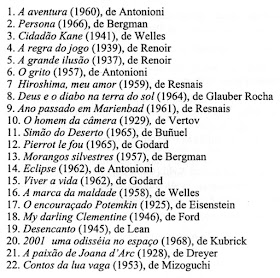Frank King and anonymous colorists, Gasoline Alley, August 29, 1926.
The real problem, if there is one, is that until now no one thought about comics restoration theory. As many things in comics, this is a field almost untouched by scholars. The first point that should worry us, as it worries any restorers in other visual art fields, is authenticity. I thought about it, with Nelson Goodman's huge help, here. Contrarily to what you may read in the aforementioned post it's precisely the color (when it is not what the French call "couleur directe" [direct color]) that I don't think is autographic. Kim Thompson made me see my mistake. The colorist's work is autographic, but the color guides are not. Colorists and separators are not the same people, that's why there are notations for colors in color guides and that's why coloring in comics is not an autographic process, but a allographic one. This doesn't mean that the latter isn't obliged to follow the former's indications of course, but since the process is two stage with notations linking them it is, by definition, definitely allographic.
This answers one of my questions: does the printing technique matter? Being the coloring process allographic, after all, the answer is no, of course not.
That said, who's right?, yours truly or Manuel Caldas? We both are because, being an allographic process, it all bogs down to personal taste. The truth is that I'm a Ben Day dots fetishist and I love old newspaper comics coloring (but so does Manuel), out of register colors and all... In the case that the restorer is also a colorist s/he must follow the original color guides. If the restorer is just that, a restorer, s/he must leave the colors alone cleaning ink blots and erasing the effects caused by the passing of time (mainly by the tanning and foxing of the pulp paper). Scanners may help in recovering the vividness of the original coloring.
A few days ago I decided to make an experiment. I decided to randomly choose a Sgt. Kirk page and do what Manuel wanted me to do. I also increased the color saturation as Diego told me to. You can see the result below. I hope that you like it. I have to confess that, contrarily to my beliefs I like it a lot, but the process is so laborious that I doubt I'll do another one.
This answers one of my questions: does the printing technique matter? Being the coloring process allographic, after all, the answer is no, of course not.
That said, who's right?, yours truly or Manuel Caldas? We both are because, being an allographic process, it all bogs down to personal taste. The truth is that I'm a Ben Day dots fetishist and I love old newspaper comics coloring (but so does Manuel), out of register colors and all... In the case that the restorer is also a colorist s/he must follow the original color guides. If the restorer is just that, a restorer, s/he must leave the colors alone cleaning ink blots and erasing the effects caused by the passing of time (mainly by the tanning and foxing of the pulp paper). Scanners may help in recovering the vividness of the original coloring.
A few days ago I decided to make an experiment. I decided to randomly choose a Sgt. Kirk page and do what Manuel wanted me to do. I also increased the color saturation as Diego told me to. You can see the result below. I hope that you like it. I have to confess that, contrarily to my beliefs I like it a lot, but the process is so laborious that I doubt I'll do another one.
Héctor Germán Oesterheld (w), Hugo Pratt (a), Stefan Strocen (c), "Cerco de muerte," Misterix # 316, October 10, 1954.
PS Look at the rich textures of those surfaces and the smooth transitions and tell me if I'm not right in being a dots fetishist! Imagine it all flat and dull. It would definitely ruin everything.













